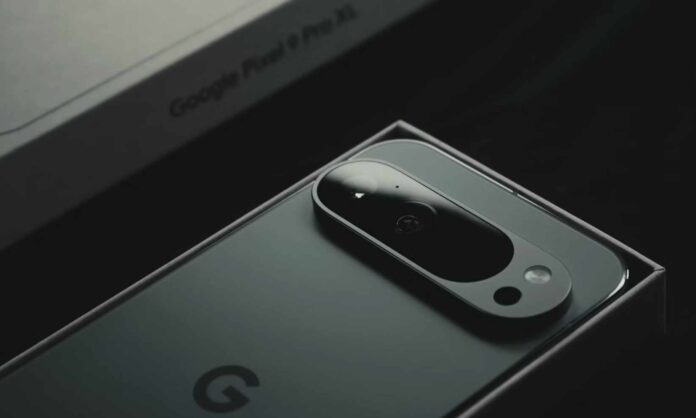- Google confirmed more GPU driver updates are coming for the Pixel 10 series.
- Users have complained about weak gaming performance and random crashes.
- Outdated PowerVR drivers are believed to be the main cause.
- A December Pixel Drop update may bring major GPU improvements.
Google has assured Pixel 10 owners that more GPU updates are on the way after growing complaints about performance issues. Many users have reported inconsistent graphics quality and slower-than-expected gaming performance since the phone’s release.
According to Google, improvements to the GPU driver are part of the company’s regular system updates, which arrive monthly and quarterly. The company confirmed that it has already made progress with the September and October updates and that more are coming soon.
For Pixel 10 owners who have noticed lag, frame drops, or random app crashes during heavy gaming sessions, this statement offers a bit of reassurance. Google seems to be taking the feedback seriously and is actively refining the driver software that controls how the GPU communicates with Android.
Why Pixel 10’s GPU Has Been Under Fire
The Pixel 10 series, including the standard and Pro XL versions, runs on Google’s Tensor G5 chipset. The chip uses a PowerVR GPU designed by Imagination Technologies. This move was interesting because Google had previously relied on ARM Mali graphics for earlier Tensor chips.
When reviews and benchmarks first appeared, the GPU inside the Pixel 10 struggled to keep up with rival flagship devices. Games like Call of Duty Mobile or Genshin Impact sometimes ran slower than expected. In everyday use, the phone remained smooth, but under heavy graphics load, it fell short.
Tech analysts quickly pointed out that the GPU drivers on the Pixel 10 were outdated. Imagination Technologies had already released newer drivers months earlier, but Pixel 10 devices shipped without them. These newer drivers added Android 16 compatibility and Vulkan 1.4 support, both of which are crucial for advanced graphics processing.
Because of that, the GPU on the Pixel 10 was not running at its full potential. This could explain why some users noticed reduced frame rates or lower stability in demanding apps. The missing updates also limited support for some newer gaming technologies that competitors like Qualcomm and Samsung already include.
Google’s Plan to Fix the Problem
Google says it is continuing to improve driver quality through its monthly patches and its larger quarterly updates. The company’s spokesperson mentioned that previous updates already included GPU driver changes and that more are planned for future releases.
Many expect the next major “Pixel Drop” update in December to include a more substantial GPU driver refresh. These Pixel Drops often bring not only security and bug fixes but also performance improvements and new software features.
If that happens, Pixel 10 users might finally receive the updated GPU driver that Imagination Technologies released earlier in the year. This update could enhance gaming performance, fix compatibility issues with certain apps, and make the phone’s GPU fully optimized for Android 16.
Still, Google has not confirmed exactly when the update will arrive or which driver version it plans to include. The company has only said that work is ongoing and improvements are coming soon.
The Real Impact of Driver Updates
GPU drivers are like translators between hardware and software. When they are out of date, performance can suffer because the phone’s operating system is not making full use of the graphics chip. Updated drivers can improve everything from gaming speed to stability and battery efficiency.
In the case of the Pixel 10, a proper driver update could make a noticeable difference in how games render, how smoothly apps run, and even how efficiently the GPU manages power. Users might not see a total transformation, but smoother gameplay and fewer crashes are realistic expectations.
However, there are still hardware limits. Even with updated software, the PowerVR GPU inside the Tensor G5 might not reach the same power levels as Qualcomm’s Adreno or Apple’s A-series graphics. Google’s focus with Tensor chips has always leaned more toward AI and computational photography than raw performance.
So, while new drivers will likely fix lag and crashes, the Pixel 10 may still remain behind other flagship phones in heavy gaming scenarios. That trade-off reflects Google’s broader design priorities — intelligent features first, gaming horsepower second.
What Pixel 10 Users Can Expect Next
Pixel 10 users can expect continued monthly patches with smaller tweaks and one or two major feature drops each quarter. The December update is expected to include bigger GPU-related improvements, though details remain under wraps.
If Google pushes out the latest GPU drivers, users will likely notice better support for advanced rendering technologies, improved Vulkan performance, and more consistent frame rates. It should also make the Pixel 10 better prepared for Android 16 and future games optimized for Vulkan 1.4.
For now, users are advised to keep their phones fully updated. Even minor system patches often include behind-the-scenes changes that affect performance.
Despite its slower GPU start, the Pixel 10 remains strong in photography, AI tasks, and everyday speed. With Google’s promised updates on the horizon, there’s still a chance for the Pixel 10 series to deliver a much smoother gaming experience before the year ends.
Follow TechBSB For More Updates

